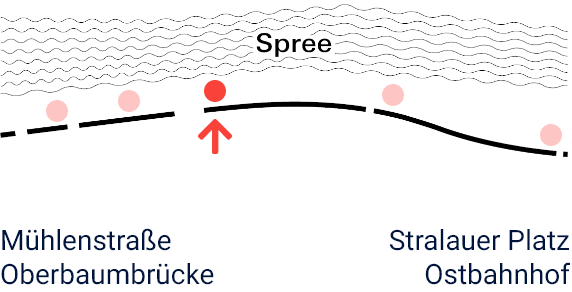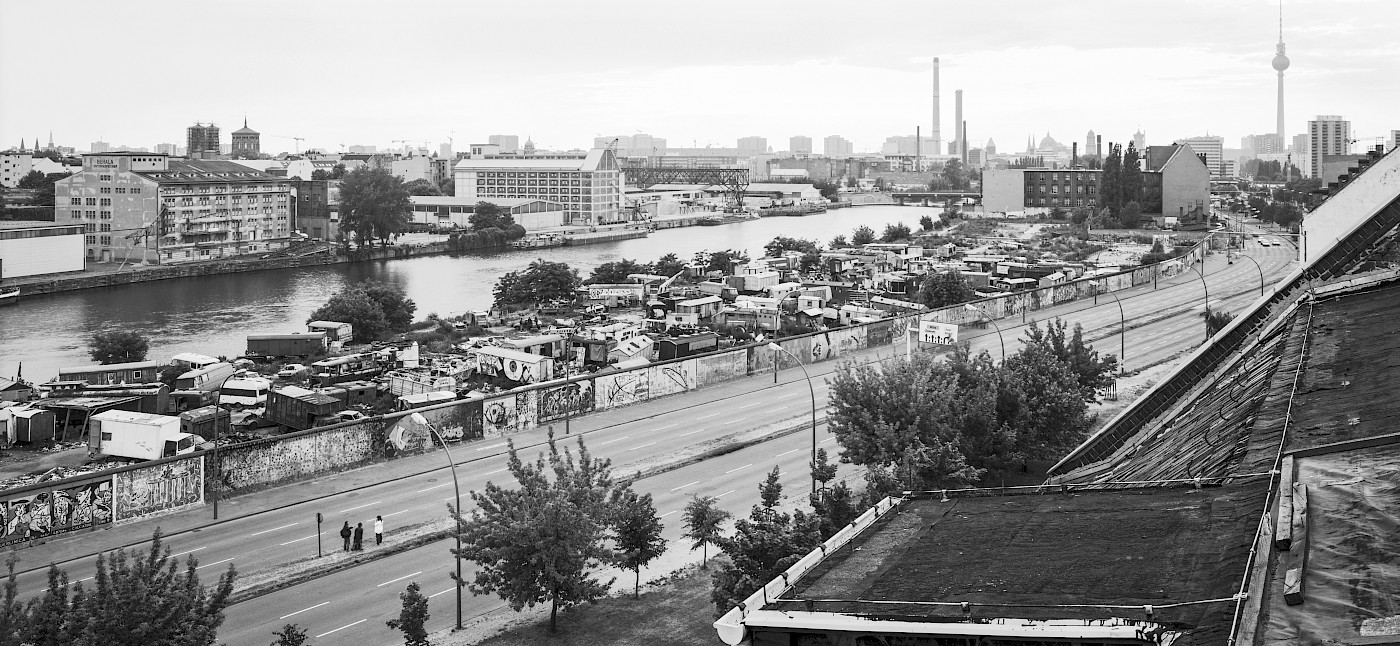1991
– 1996

Additional information:
Life in a Construction Trailer. Life at the East Side Wagenburg
Life in a Construction Trailer. Life at the East Side Wagenburg
After 1991, people from all over the world set up home in construction trailers along the East Side Gallery. Some just wanted to have a different kind of home and went to work, training or school from here. Others were dropouts who wanted to break with social norms and live in more democratic communities. Some were passing through and lived here when they needed a place to stay in Berlin. The English artists’ group mutoid waste company seized on the free space for use as a workshop for everything from making art to building trailers. In the early days there was room for everyone in the former border strip.
"We used the Wall for protection."

The different people and groups living along the Spree and the East Side Gallery did not bond in the way that is typical of Wagenburgen, or alternative trailer camps. They led parallel lives. Violence and drug dealing became a problem. The Berlin Senate had the area cleared in 1996, leaving over 250 people in need of a new place to live. Today there are still more than ten Wagenburgen in Berlin.
"Like being on an island…"
The Wagenburg was well protected. The Spree formed a natural barrier on one side; the 1.3 km-long Wall warded off prying eyes and unwelcome interference on the other. But there were also disadvantages to the location: The Wagenburg could only be exited through far gates in the Wall. To shorten the distances, one of the residents cut an opening in a closer part of the Wall. It can still be seen; the grille was inserted later. The Wagenburg residents created their own world in the middle of the city. Photographer and Wagenburg resident Ralf Marsault captured his fellow residents Chris and Ferai as they themselves wanted to be seen.
With the tension of bloc confrontation and the Cold War eased at last, West German artist Jolly Kunjappu wanted to express one thing above all with his Wall painting of 1990: the joy of freedom. In an interview of 2021, he reiterated his wish for people to live together in peace and mutual respect. The message of his painting Dancing To Freedom is: “No more war, no more walls, a united world.”